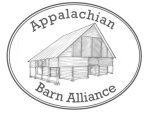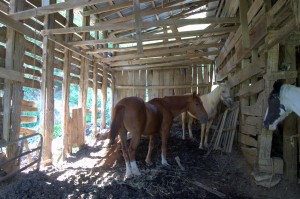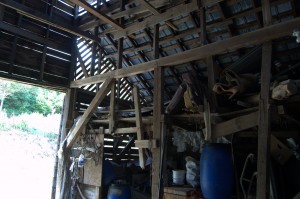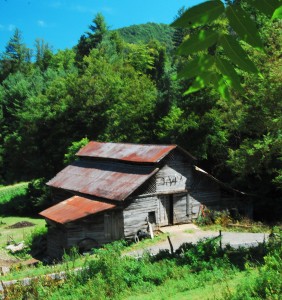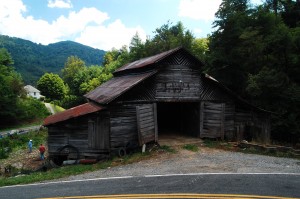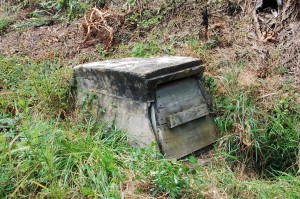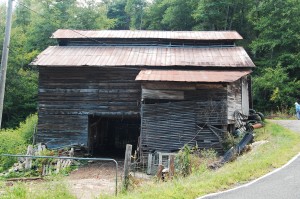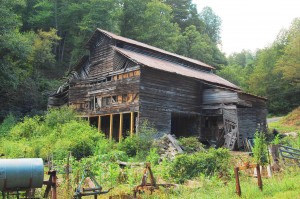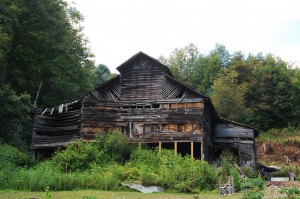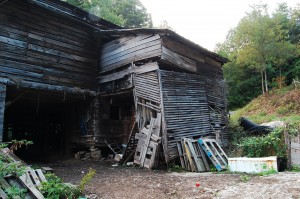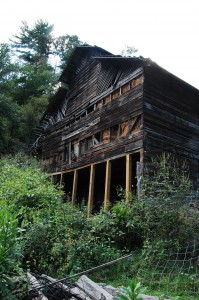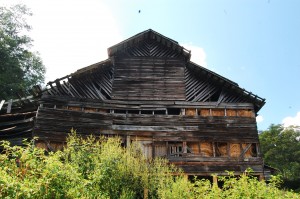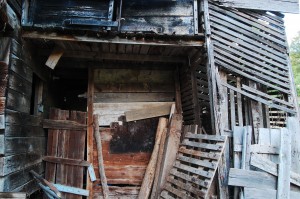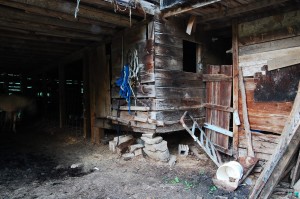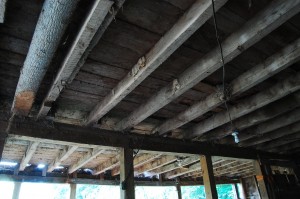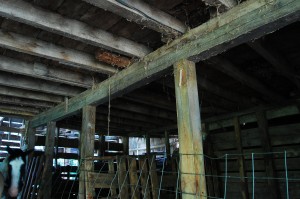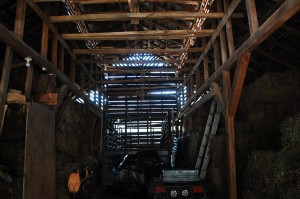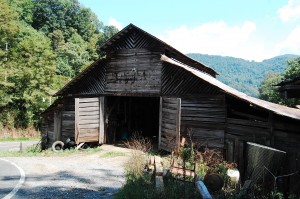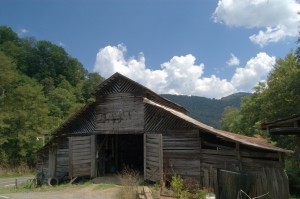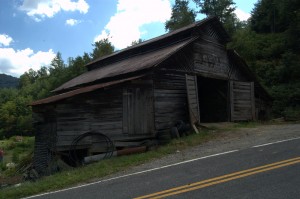Address:
9840 Big Pine Road, Marshall, NC 28753
Year Built: 1918
Historic Owners: Claude Wild, son Herbert Wild
Description:
The Claude and Katie Wild barn is one of six distinctive monitor roof barns found only in the Walnut Township, with all but one in the Big Pine Creek valley. Being a unique and progressive barn design for 1918 in Madison County, it is speculated that the design, like the George Washington Wild barn, was built from a set of plans acquired in Tennessee by Claude Wild during his travels as a peddler. At the height of his travels, Wild drove a state-of-the-art peddler’s truck, an REO “Speed Wagon”, and typically made $75 a circuit, driving from Big Pine to Newport, TN, to Asheville, and back to Big Pine. He did not believe in buying food while on the road, and his wife made him ham biscuits to eat while traveling. He was the first Big Pine resident to own a truck. Across the road from the front of the barn is a small concrete structure that Wild built as a spring box, receiving spring water piped from higher up the mountainside. It has his initials and year, “C. J. W. 1919” etched into the top, and still flows into the horses’ water tub. He and his father, George Washington Wild (#7) also installed the first small hydro-electric generator, and thus had the first electric lights in the valley. The front of the corn crib is angled to follow the curve of the roadway. Claude Wild moved to the Brush Creek community in 1938.
Historic Use: livestock
Type of Construction: Post and Beam, Sawn lumber, and Stud Frame
Siding Materials: Milled Boards and Lattice
Roof Shape: Monitor
Roofing Materials: Unknown
Roof Framing: Milled rafters
Foundation: Dry-Laid Stone and Wood sills on rock piers
Species of Wood: Chestnut and Various Other
Hinges: Commercial Metal
Fasteners: Wire nails
Additional Features:
Across the road from the front of the barn is a small concrete structure that Wild built as a spring box, receiving spring water piped from higher up the mountainside. It has his initials and date built, “C. J. W. 1919” etched into the top, and still flows into the horses’ water tub.
The corn crib is an unusual attached structure that includes an area for receiving and drying the green, unshucked ears of corn. When dry, they are shucked there and the shucked ears are dropped below into the crib for storage
Outbuildings: several other more recent barns are in the area.
NOTE: The information above is an abridged list. For the full unabridged list (complete details), please download the PDF of the Data Form above.
NOTE: These photographs are meant to illustrate various features and construction elements of this barn.
